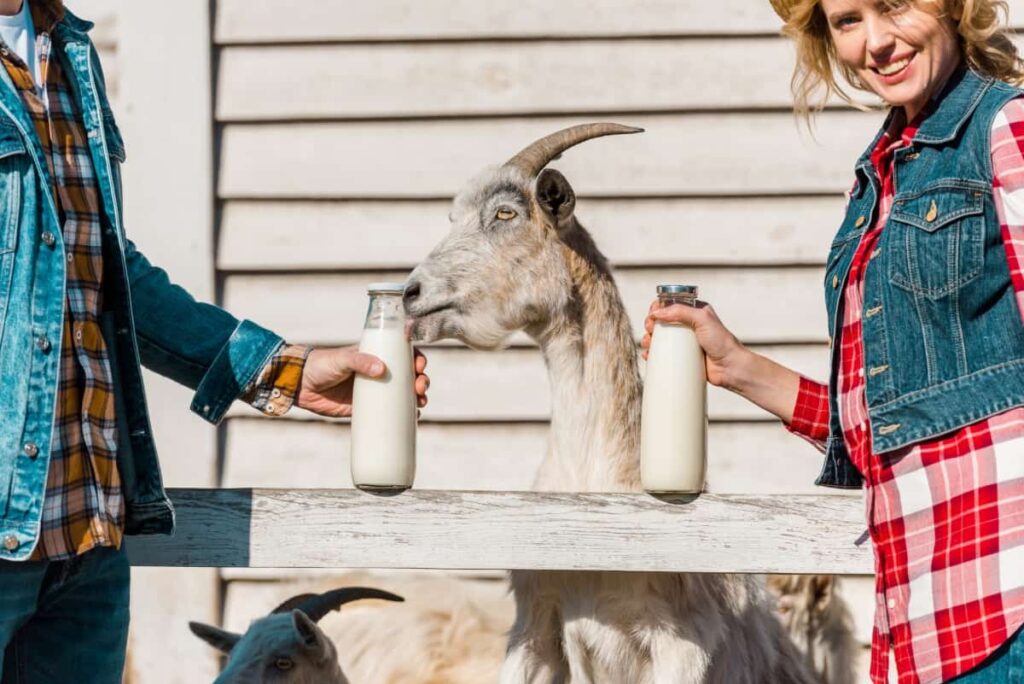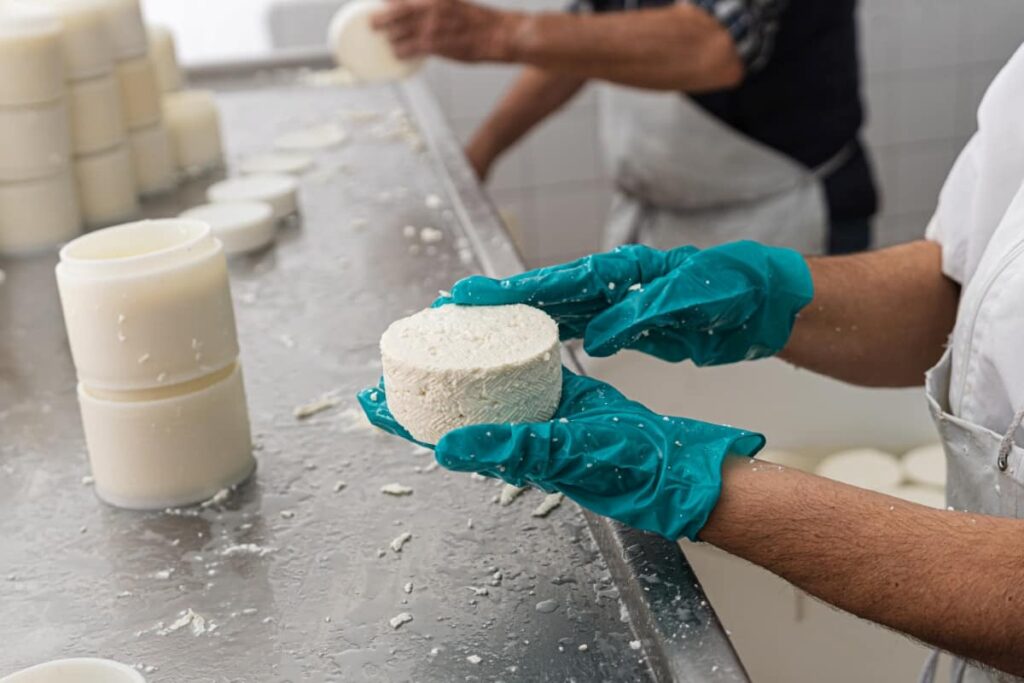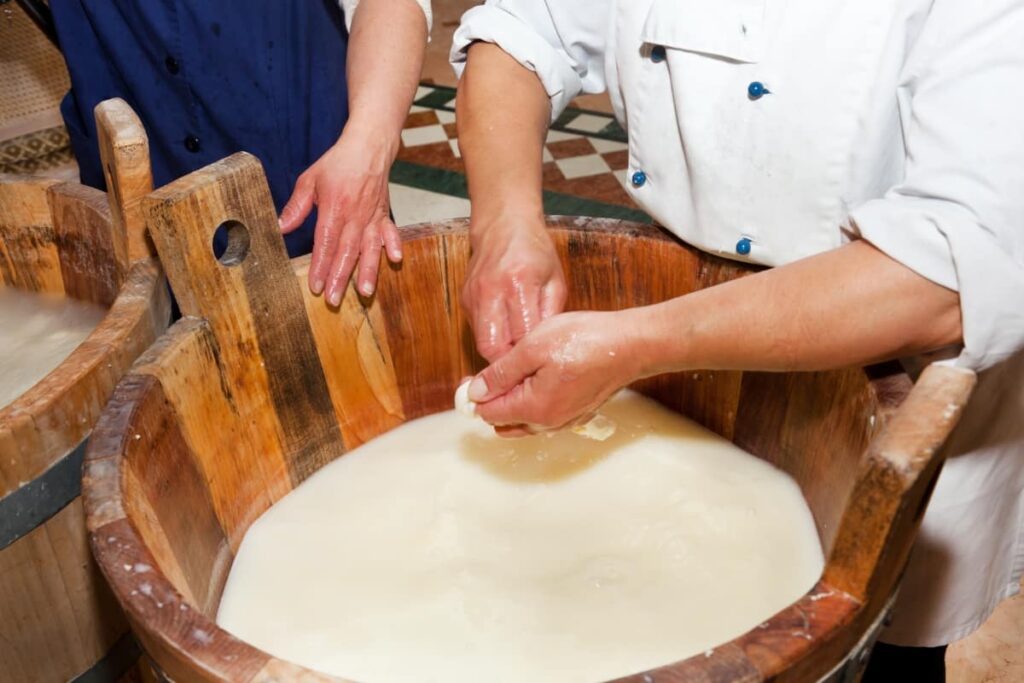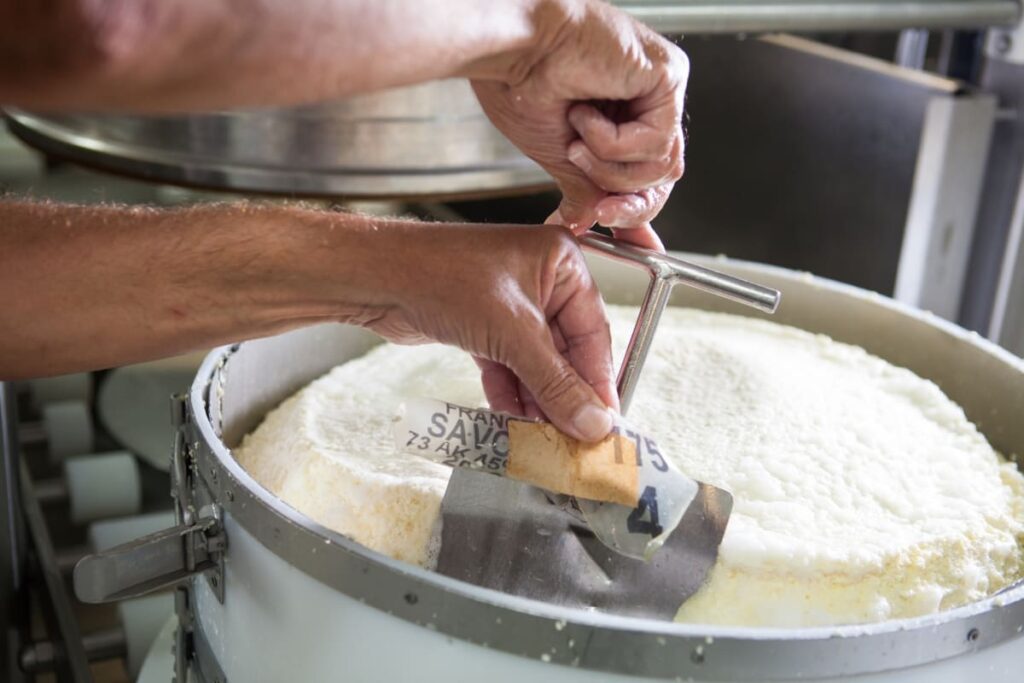Goat farming is the method of raising goats for several purposes, such as milk production, meat, fiber, and even companionship. It has been a longstanding tradition in many cultures around the world due to the versatility and adaptability of these remarkable creatures. Proper milking procedures in goats ensure that the milk collected is clean, free from contaminants, and safe for consumption.

Dairy Product Processing in Goat Farming
Preparation and Selection of Goats for Milking
Before starting the milking process, it is important to choose the right goats for milking carefully. Selecting healthy and productive goats is crucial. The health of the goat directly affects the quality of its milk. Look for goats that are free from any illnesses or infections. Regular health check-ups are necessary to ensure their well-being.
Consider the breed of the goats. Different breeds have different milk production capabilities and qualities. Additionally, proper nutrition is key in preparing goats for milking. Furthermore, providing a clean environment for your goats is essential, as cleanliness reduces the risk of contamination during milking sessions.
Goat Milking Techniques and Equipment
It is important to create a calm and clean environment for milking. Goats can be sensitive creatures, so minimizing stress during this process is crucial. Gentle handling and minimal distractions help in maintaining a relaxed atmosphere. Next, choosing suitable equipment is vital. A good quality milking machine or hand milker should be used. Proper technique plays a significant role in effective milk extraction from goats. The udder should be cleaned thoroughly before starting the process to avoid any dirt entering the milk supply chain.
Milking Procedures and Frequency
Milking should be done in a clean and hygienic environment to prevent contamination. Before starting the milking process in goats, it’s important to ensure that the goat is calm and comfortable. Additionally, regular grooming and cleaning of udders will help maintain cleanliness during milking. The frequency of milking largely depends on factors such as lactation stage, breed, and individual production capacity. Generally, dairy goats are milked twice a day – once in the morning and again in the evening – with approximately 12 hours between each session.
In case you missed it: Managing Parasites in Goats: Prevention, Diagnosis, and Treatment

Collection and Storage of Goat Milk
Once the goats have been carefully milked, it is important to handle the milk properly to maintain its freshness and quality. To begin with, collection should be done in clean and sterilized containers to prevent contamination. The milk should be immediately transferred to a well-maintained refrigeration unit or cold room to keep it at an optimal temperature.
Proper labeling of each container is essential for efficient inventory management. It allows farmers to track which batch of milk was collected on a specific day, ensuring that older stock can be used first. Storage rooms must be kept clean, dry, and well-ventilated to discourage mold growth. Regular cleaning schedules help maintain hygiene standards throughout the facility.
Processing Fresh Goat Milk
Once the goat milk is collected, it goes through many steps to ensure its cleanliness and quality. The first step in processing fresh goat milk is to filter out any impurities or debris that may have been picked up during milking. This can be done using a cheesecloth or fine mesh strainer. Next, the milk needs to be cooled down quickly to prevent the growth of bacteria.
This can be achieved by placing the milk container in an ice bath or using a commercial-grade dairy cooler. After cooling, the fresh goat milk can undergo pasteurization, which involves heating it to a specific temperature to eliminate harmful pathogens while preserving its nutritional value. Fresh goat milk also serves as an essential ingredient in other processed products like ice cream, butter, and even soap.
Pasteurization and Homogenization of Goat Milk
Pasteurization mainly involves heating the milk to a specific temperature to kill harmful bacteria. At the same time, homogenization is the process of breaking down fat particles in the milk to create a uniform consistency. During pasteurization, raw goat milk is heated at around 63°C for about 30 minutes. The heat treatment also helps extend the shelf life of the milk by reducing bacterial spoilage.
Homogenization, on the other hand, breaks down fat globules into smaller particles that are evenly distributed throughout the liquid. This prevents cream separation and creates a smooth texture in dairy products made from goat milk. However, it’s crucial to understand that proper pasteurization provides an essential layer of protection against harmful bacteria commonly found in raw dairy products.
Quality Control and Regulatory Compliance in Goat Dairy Production
Ensuring the highest standards in milk processing is crucial to maintaining the safety of dairy products. The important aspect of quality control in goat farming is regular testing for contaminants such as antibiotics or pathogens. This helps ensure that the milk produced meets food safety standards and is free from any harmful substances. Regular monitoring also allows farmers to identify potential issues and take necessary corrective actions.
In case you missed it: Integrating Goats into Sustainable Farming Systems

In addition to testing, proper hygiene practices during milking are essential for maintaining product quality. To comply with regulatory requirements, goat dairy producers must also keep detailed records of their operations. Meeting regulatory standards demonstrates a commitment to transparency and responsible farming practices.
Marketing and Sale of Goat Dairy Products
The first consideration is identifying your target market. Once you’ve identified your target market, it’s crucial to develop a strong brand image. This includes creating an attractive logo, packaging design, and compelling messaging that communicates the quality and benefits of your goat dairy products.
In today’s digital age, having a strong online presence is also vital. Establishing a website and utilizing social media can help increase visibility and engage with potential customers. Another important aspect is building relationships with local retailers, restaurants, and farmers markets who may be interested in carrying your products.
Goat Dairy Farm Management and Sustainability
Effective management practices not only contribute to the well-being of goats but also optimize milk production and quality. The key aspect of goat dairy farm management is providing proper nutrition to the animals. A well-balanced diet ensures that goats receive all the necessary nutrients for optimal health and milk production.
Regular monitoring of goat health is essential in farm management. Maintaining clean and comfortable housing facilities for goats is another important aspect of sustainable farm management. Proper waste management practices should also be implemented on dairy farms to ensure environmental sustainability.
Goat Dairy Industry Trends and Future Prospects
The key trend in the goat dairy industry is a shift towards organic and artisanal production methods. Consumers are willing to pay a premium for high-quality, ethically produced goat milk products that have been carefully crafted with attention to detail.
Another promising trend is the increasing popularity of specialty cheeses made from goat milk. Automated milking machines and innovative processing techniques have improved efficiency and productivity on goat farms, making it easier than ever to meet growing consumer demands. In addition to market trends, regulatory compliance will continue to be an important aspect of goat dairy production.
Frequently Asked Questions (FAQ) on Milking Procedures and Dairy Processing in Goat Farming
Should I Wear Gloves when Milking Goats?
Wearing gloves during milking is recommended as it helps maintain good hygiene standards while preventing bacteria from transferring from your hands to the milk.
Is It Necessary to Separate Kids from Their Mothers During Milking?
Separating kids from their mothers during milking is generally practiced in commercial dairy farms to ensure maximum yield and quality of milk. However, if you have only a few goats or are practicing backyard farming, you can choose not to separate them but still schedule regular feeding times around your milking routine.
Can I Use Machine Milking Instead of Hand-Milking My Goats?
Yes, machine milking can be used in goat farming, but it requires proper equipment designed specifically for small ruminants like goats. Machine milking saves time and effort compared to hand-milking but needs careful monitoring as improper suction pressure may cause harm or discomfort to your animals.
In case you missed it: Artificial Insemination in Goat Breeding: Pros and Cons

Conclusion
Goat milk is highly nutritious and packed with essential vitamins (like A and B), minerals (such as calcium and phosphorus), proteins (casein being one prominent example), healthy fats, probiotics, and enzymes. Milking procedures and dairy product processing play a crucial role in the success of any goat farming operation. These processes are important not only for the production of high-quality dairy products but also for maintaining the goats’ health.
- Types of Grass Growing for Goat Farm
- How to Train Goats for Milking: A Beginners Guide
- Goat Milking Practices and Equipment: A Beginner’s Guide
- Goat Farming for Fiber: Producing Mohair and Cashmere
- Maximizing Goat Milk Production: Tips for Dairy Goat Farmers
- Goat Farming as a Family Business: Strategies for Success
- Profitable Kenya Goat Breeds for Commercial Dairy and Meat Business
- Unlock the Secrets of Oberhasli Goat: Discover Raising and Management Practices
- Ultimate Guide to Myotonic Goats: Explore Profile to Raising